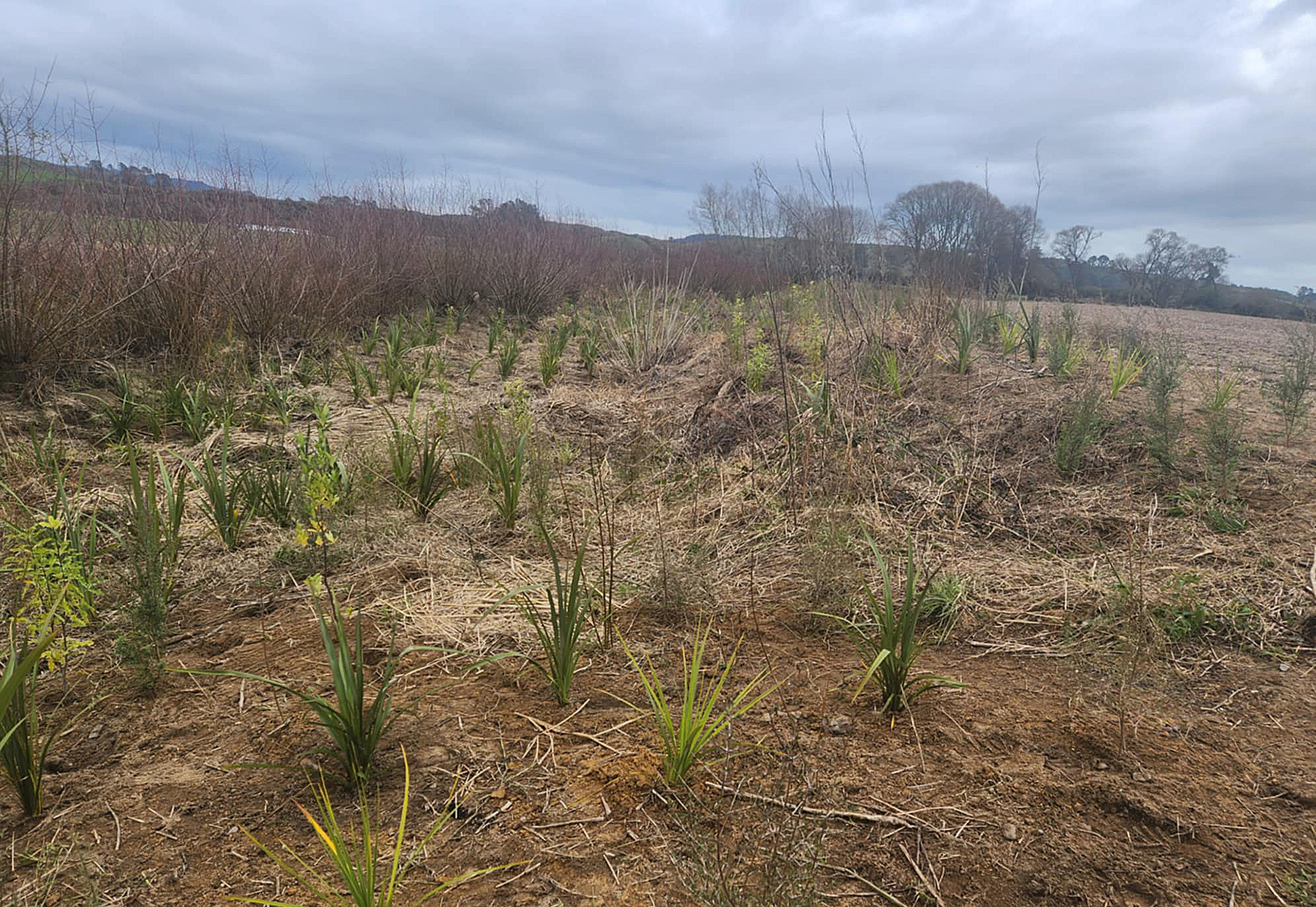Future focus at planting day

Paul Charman
Goodwill flowed like a river when more than 60 volunteers gathered at Rūātoki to replant native vegetation last month.
People of all backgrounds took part in He Whāriki mō Paekoau, an annual riparian planting day that brought together locals, town folk, business partners, and farmers at Te Tawa Kaiti Lands Trust, on Paekoa Road, Rūātoki.
“Riparian planting is one of the most effective ways we can care for our soils and bring life back to our waterways,” said Te Tawa Kaiti Trust general manager Hinehou Timutimu.
“We support interventions that blend Western science with traditional knowledge, always guided by our values: care and generosity (manaaki), guardianship (kaitiaki), relationships and connection (whanaungatanga), and spiritual wellbeing (wairua).”
“Healing land damaged by erosion and runoff begins, first and foremost, with unity.”
The day began with a karakia led by Hakeke McGarvey, a trustee of Te Tawa Kaiti.

At lunchtime, three-year-old Meadow Kelly-Heke blessed the food.
“For us the spiritual side of conservation is as important as the physical work – you can’t separate them,” Ms Timutimu said.
Following the dedication, students from Whakatāne High School’s marine and land sustainability classes, plus international students, worked alongside Nga Whetu ō Tawera Kohanga Reo and many others.
The earlier mahi involved site clearing, planning, kai organisation, and logistics. Volunteers got to work digging in 400 swamp grass plants, 200 swamp karamu, 150 tī kōuka (cabbage trees), 50 umbrella sedges, 200 manuka, 200 jointed rushes, 300 karaka, 50 māpou, and 50 pittosporums.
“While the full results may take years to emerge, that’s expected,” Ms Timutimu said. “We’re committed to long-term change.”
“Everything we do here is for future generations, and of course much of the value of reducing runoff will benefit others downstream. In the big picture it's all vital to restoring the mauri of Paekoau. We’re monitoring populations of invertebrate and fish species in our stream. Early signs indicate some taonga such as tuna (eels) are making a comeback, which is great.”
“Te Tawa Kaiti Lands Trust is primarily aiming to improve the land for future generations. We can't change what has already been done but it's exciting we can make changes that will benefit those coming after us.”
Before returning to Rūātoki, Ms Timutimu worked in payroll and human resources for Health Alliance, an organisation that provided shared non-clinical services to Counties Manukau and Waitematā District Health Boards. She views her return to manage the trust’s maize and dairy operations as a strategic opportunity to apply her experience toward long-term sustainability and growth.
“There are challenges but also great opportunities in our work. Climate change is one of the challenges we face, but it’s not all doom and gloom. We’re actively exploring ways to reduce greenhouse gas emissions and build resilience into our systems, through smarter land use and long-term optimisation strategies.
“We are involved in different projects – including our recent conference on innovation in agriculture, at Tauarau Marae in Rūātoki. Positive uses for science and technology improve profitability and restore the land – they can go hand in hand.
“A big part of this is our collective approach as the Rūātoki cluster, four land trusts working together. Te Tawa Kaiti is the lighthouse, leading with innovation, values, and mātauranga integration to build resilient, future-focused systems.”

On behalf of the trust, Ms Timutimu has extended heartfelt thanks to the many kura, hapū, marae, and organisations that supported the planting.
They include Paneteure Marae, Ngahina Marae, Te Taraipara Rūātoki, Te Uru Taumatua, Nga Whetu ō Tawera Kohanga Reo, Tawera Kura, Whakatāne High School, Bay of Plenty Regional Council, Whakatāne District Council, Fonterra, ANZ, Goldsmiths Accountants, Landvision, Rūātoki Farms cluster, Trees for Survival and Halo.